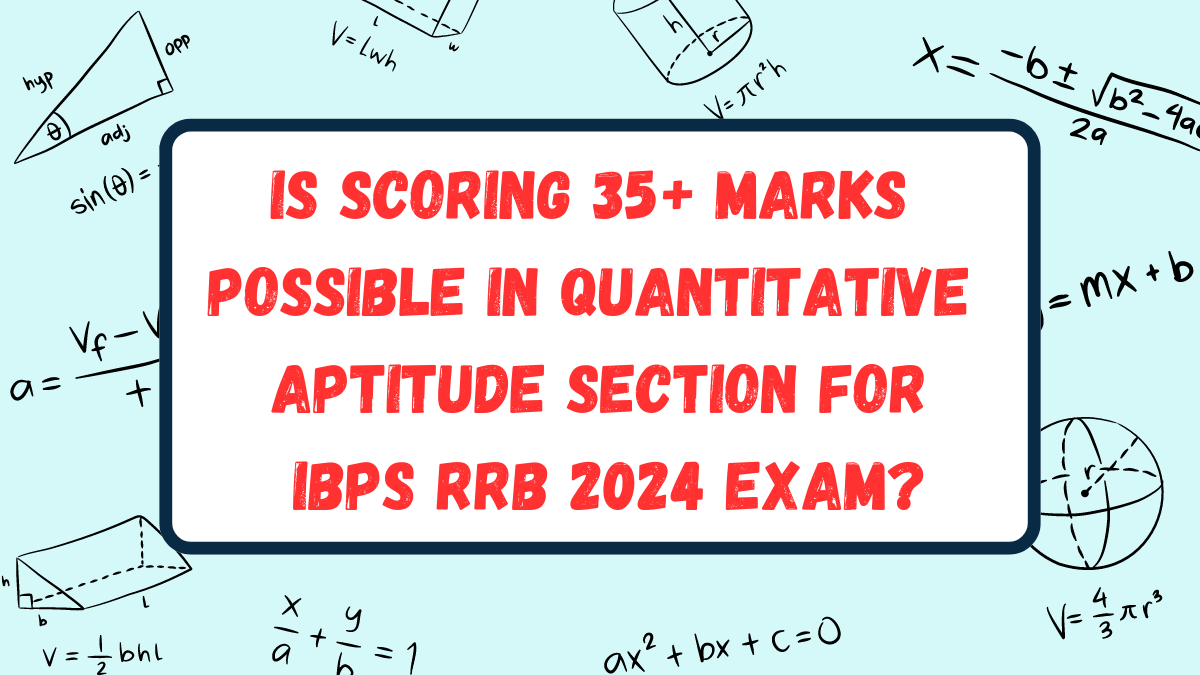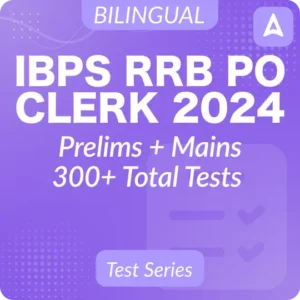Table of Contents
The Quantitative Aptitude section of the IBPS RRB Exam is a significant hurdle for many aspirants appearing for the examination. With the IBPS RRB Syllabus comprising the topics of arithmetic, number series, inequalities, approximation, data interpretation, data sufficiency, etc. achieving a score of 35+ might seem challenging. However, with a strategic approach, consistent practice, and a deep understanding of the concepts, it is entirely possible. In the given post, we have discussed the important parameters that an aspirant should follow to score 35+ Marks in the quantitative aptitude section of the IBPS RRB 2024 Exam.
IBPS RRB 2024 Exam: Quantitative Aptitude Syllabus
The quantitative aptitude section is a mix of fundamental arithmetic, logical reasoning, and data analysis. The important topics that an aspirant has to cover in the quantitative aptitude section for the IBPS RRB 2024 Exam are as follows:
- Arithmetic: A cornerstone of the section, it includes topics like Ratio and Proportion, Percentage, Number System and HCF and LCM, Basic of Algebra Average, Age, Partnership, Mixture and Alligation, Simple Interest, Compound Interest, Time and Work, Pipe and Cistern, Profit & Loss and Discount, Speed Time Distance, Boat And stream, Train, Mensuration 2D and 3D, Probability, Permutation and combination etc.
- Number Series: This tests the ability to identify patterns and trends in number sequences.
- Inequalities: This involves solving quadratic equations, comparing quantities, and understanding statement-based quadratic equations.
- Approximation: This tests the ability to estimate values quickly and accurately using BODMAS, squares, cubes, roots, indices, fractions, and percentages.
- Data Interpretation: This requires analyzing and interpreting data presented in various formats like tables, charts, and graphs.
- Data Sufficiency: Through Data Sufficiency candidates’ ability to determine whether given data is sufficient to answer a question or not is analyzed.
IBPS RRB 2024 Exam: Quantitative Aptitude Weightage
The Quantitative Aptitude section is asked in both the stages of the IBPS RRB Clerk and PO selection process, i.e. Prelims and Mains. In the preliminary examination, a total of 40 questions are asked for 40 maximum marks. As specified in the IBPS RRB 2024 Notification PDF, a total of 40 questions are asked for a total of 50 marks in the main examination.
| IBPS RRB Exam: Quantitative Aptitude Weightage | |||
| Section | Stage | No. of Questions | Maximum Marks |
| Quantitative Aptitude | Prelims | 40 | 40 |
| Mains | 40 | 50 | |
Is Scoring 35+ Marks Possible in Quantitative Aptitude Section for IBPS RRB 2024 Exam?
Achieving a score of 35+ in the quantitative aptitude section requires dedication and a well-structured approach. While the IBPS RRB Syllabus is extensive, consistent practice and a focus on key areas can lead to success. Break down the syllabus into manageable chunks, allocate specific time for each topic, and gradually increase the difficulty level of questions. Stay motivated, and believe in one’s abilities, which will ultimately help candidates attain their targeted score.
Building a Strong Foundation
- Master the Basics: Ensure a clear understanding of the topics of arithmetic.
- Practice Regularly: Consistent problem-solving enhances speed and accuracy.
- Concept Clarity: Focus on understanding the underlying principles rather than just memorizing formulas.
Time Management
- Mock Tests: Simulate exam conditions to improve time management.
- Question Selection: Prioritize questions based on difficulty and strengths.
- Speed and Accuracy: Aim for a balance between solving questions quickly and accurately.
Accuracy Over Speed
- Double-check Answers: Prevent careless errors by verifying calculations.
- Avoid Guesswork: Attempt only questions that give confidence as there is negative marking.
- Focus: Concentrate on each question to minimize mistakes.
Practice and Analysis
- Previous Year Papers: Analyze past papers to understand exam patterns.
- Mock Tests: Regularly assess the performance to identify weak areas.
- Targeted Practice: Focus on topics where candidates lag.
Shortcuts and Tricks
- Learn Efficient Methods: Discover time-saving techniques without compromising accuracy.
- Practice Application: Use shortcuts judiciously to enhance speed.
- Concept Understanding: Ensure shortcuts are based on solid conceptual knowledge.
Data Interpretation and Sufficiency
- Visualization: Practice converting data into mental images for quicker analysis.
- Calculation Speed: Improve calculation efficiency for faster data processing.
- Data Sufficiency Logic: Understand the requirements for sufficient data.
Additional Tips
- Online Resources: Utilize online platforms like Adda247 for practice, mock tests, and video tutorials.
- Study Groups: Collaborate with peers for discussions and knowledge sharing.
- Positive Mindset: Maintain a confident and optimistic outlook.




 GA Capsule for SBI Clerk Mains 2025, Dow...
GA Capsule for SBI Clerk Mains 2025, Dow...
 The Hindu Review October 2022: Download ...
The Hindu Review October 2022: Download ...
 Weekly One Liners 24th to 30th March, 20...
Weekly One Liners 24th to 30th March, 20...




